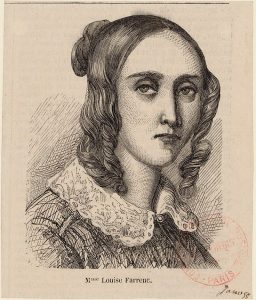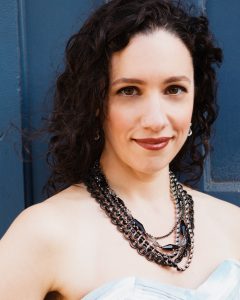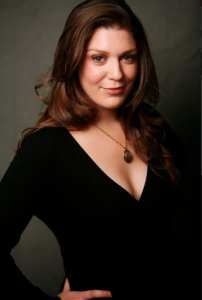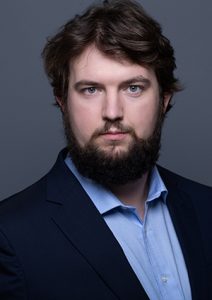Masterworks 4: Unstoppable Beethoven
Conductor Scott Seaton
- Saturday, May 14, 2022 @ 7:30PM | Cascade Theatre, Redding, CA
 Single Tickets on Sale now!
Single Tickets on Sale now! - Sunday, May 15, 2022 @ 2:00PM | Laxson Auditorium, Chico, CA
 Single Tickets on Sale now!
Single Tickets on Sale now!
Guest Soloists:
Tonia D’Amelio, soprano
Molly Mahoney, mezzo-soprano
Michael Desnoyers, tenor
Ben Brady, bass-baritone
Choirs:
Shasta College Chorus | Elizabeth Waterbury, Director
Simpson University Choirs | Steve Kim, Director
Program:
FARRENC - Overture No. 2
BEETHOVEN IDOL WINNER - WORLD PREMIERE
BEETHOVEN - Symphony No. 9
Digital Program Book Now Available!
Concluding our season crescendo is Beethoven’s monumental Ninth Symphony, a work showcasing the power, heroism, humanity, and revolutionary spirit of his groundbreaking and visionary voice. In addition to our four phenomenal soloists, we will have more than 100 voices from the combined choruses of Shasta College and Simpson University. The performance begins with the dramatic and fiery Overture No. 2 by Louise Farrenc and also features a world premiere by the winner of the North State Symphony Composition Competition.
About the Artists
Tonia D’Amelio, soprano
Called “extravagantly charismatic” by the San Francisco Chronicle and praised by San Francisco Classical Voice for her “vivid and technically assured” singing, soprano Tonia D’Amelio has sung with opera companies, orchestras, chamber ensembles, and vocal consorts across the U.S. and abroad.
A versatile singer with a repertoire spanning five centuries, Tonia particularly enjoys premiering opera and concert works. She created the role of Celia in Allen Shearer’s Middlemarch in Spring for the world premiere in San Francisco and the revival with Charlottesville Opera, sang in the first performance of Ryan Brown’s Mortal Lessons at the Hot Air Festival, and joined the Grace Cathedral Choir of Men and Boys to premiere Ben Bachmann’s Fantasia on American Christmas Carols. Tonia also performed featured roles in the modern stage premieres of Jean-Philippe Rameau’s Le temple de la Gloire (1745 version) with Philharmonia Baroque Orchestra and Chorale, and Carlo Pallavicino’s Le amazzoni nell’isole fortunate (1679) with Ars Minerva.
Other favorite opera and concert credits include The Queen of the Night (Die Zauberflöte), Musetta (La bohème), Donna Elvira (Don Giovanni), Elisetta (Il matrimonio segreto), and soprano solos in Mozart’s Mass in C minor, Mendelssohn’s Lobgesang, and Orff’s Carmina Burana. As a passionate advocate for sacred music in sacred spaces, Tonia has been a soloist for liturgical performances of Monteverdi’s Vespers of 1610, Mozart’s Requiem, and J.S. Bach’s St. John Passion, and has participated as a guest artist at the William Byrd Festival in Portland, Oregon, and at the Edington Festival of Music within the Liturgy in Wiltshire, U.K.
Molly Mahoney, mezzo-soprano
Molly Mahoney’s sublime singing, memorable humor, and heartfelt portrayals seen in a variety of repertoire have charmed audiences and critics alike. A stylistically diverse performer, she sings opera, musical theater, and jazz with equal aplomb.
A favorite of San Francisco Bay Area audiences, Molly’s 2016-17 season includes performances as Lady Angela in Patience with Lamplighters Music Theatre, Angelina in Cinderella with San Francisco Opera Guild Outreach, performances for West Edge Opera’s new works series, Snapshot, and as Clizia in West Edge Opera’s production of The Chastity Tree by Vicente Martín y Soler. She also returns to Society Cabaret in San Francisco’s Union Square after the success of her one woman show, Mischief! which debuted there the previous year.
In the 2015-16 season, Molly made her role debut as Beggar Woman in Sweeney Todd with Townsend Opera and Fresno Grand Opera after her introduction to the company as a soloist in Opera Remix: Music and Verse. She returned to Livermore Valley Opera, singing the role of Zulma in L’Italiana in Algeri, and performed Renu in Jack Perla’s River of Light with Festival Opera. The season also saw Molly’s return to Ars Minerva, portraying Cillene in the modern world premiere of Pallavicino’s opera Le Amazzoni nelle Isole Fortunate. Of that performance, the San Francisco Classical Voice claimed, “Molly Mahoney was very funny as madwoman Cillene and her strong, ice-tone voice served her well.” The mezzo made her company debut the previous year in another modern world premiere as Arsinoë in La Cleopatra by Castrovillari.
During the 2014-15 season, Molly returned for her third appearance as a soloist with the North State Symphony, reprised her portrayal of the title role in La tragédie de Carmen, returned to West Bay Opera as Siébel in Faust, and sang the role of Soprano II in Philip Glass's Hydrogen Jukebox with West Edge Opera, where her voice was described as having “sheer beauty and eloquence” by the San Francisco Chronicle.
Previous seasons include performances as Zweite Dame in Die Zauberflöte, Gianetta in L’elisir d’amore, Zerlina in Don Giovanni, and Tolomeo in Giulio Cesare, in addition to concert performances as alto soloist for the Mozart Mass in C Minor and Handel’s Messiah.
An experienced interpreter of the operettas of Gilbert and Sullivan, Molly has portrayed the roles of Melissa in Princess Ida and Pitti-Sing in The Mikado with Lamplighters Musical Theater, in addition to the title role in Iolanthe in a recorded performance named one of the Top 12 Must Have Opera CD Releases of 2014 by Opera News. The glowing review highlighted the “simplicity and eloquence” of Molly’s performance as the beloved exiled fairy. Her musical theater credits include Adelaide in Guys and Dolls, Anne Collier in 1940s Radio Hour, Hodel in Fiddler on the Roof and Maisie in The Boyfriend.
Molly champions the Great American Songbook, singing with Big Bands since the age of ten. She has appeared in concert with Vinnie Falcone, musical director and accompanist for the late Frank Sinatra, and she has toured nationally as a jazz singer. Her soulful, honest portrayals of familiar favorites and rare gems from this musical era can be heard on her debut album, Two for the Road.
A native of Minneapolis, Molly currently resides in San Francisco. She holds a Master of Music degree in Vocal Performance from the San Francisco Conservatory of Music.
Michael Desnoyers, tenor
Sought out for his “rich and resonant” and “sweet, well-projected lyric tenor,” Michael Desnoyers has sung over 50 different roles across San Francisco Bay Area stages, including performances with Opera San Jose, West Bay Opera, West Edge Opera, Festival Opera, Lamplighters Music Theatre, Ars Minerva, Pocket Opera, and the Mendocino Music Festival.
Praised for “a beautifully produced, even voice whose palpable sincerity and flawless legato seemed ideally suited to Mozart,” he has performed most of the major roles in the Mozart tenor repertoire, including Belmonte in Die Entführung aus dem Serail, Tamino in Die Zauberflöte, Ferrando in Così fan tutte, and Don Ottavio in Don Giovanni, and the title role in La clemenza di Tito.
With an extensive repertoire that spans from the Baroque to the 21st Century, Mr. Desnoyers has sung a number of world premieres, including the modern world premiere of Daniele da Castrovillari’s 1662 opera La Cleopatra. In 2014, he created the role of Marcus in Giancarlo Aquilanti’s The Oxford Companions. Other favorite roles include Albert in Albert Herring, Nemorino in L’elisir d’amore, Rodolfo in La Bohème, Ramiro in La Cenerentola, Almaviva in Il barbiere di Siviglia, Frederic in The Pirates of Penzance, Marco in The Gondoliers, Sextus in Giulio Cesare, Paolino in Il matrimonio segreto, Gennaro in Lucrezia Borgia, and Eisenstein and Alfred in Die Fledermaus. He frequently performs as a concert soloist, having sung Mozart’s Requiem, Coronation Mass, and Vespere solennes; Bach’s Johannes-Passion and Matthäus-Passion; Handel’s Messiah, Orff’s Carmina Burana, Rossini’s Petite Messe Solennelle, Saint-Saëns’ Christmas Oratorio, CPE Bach’s Magnificat, and Dvorak’s Mass in D.
Mr. Desnoyers can be heard on the Lamplighters’ CD recordings, singing the roles of Cyril in Princess Ida, Ernest in The Grand Duke, and of Lord Tolloller in Iolanthe, where he was praised by Opera News for his “crystal clear timbre.” Mr. Desnoyers was a member of Chautauqua Opera Young Artist program where he performed the role of Monostatos (Die Zauberflöte 2011) and covered the role of Spoletta (Tosca 2009). He has performed with many Bay Area vocal ensembles, including the San Francisco Symphony Chorus, American Bach Soloists, Capella SF, and Gaude.
A passionate and active supporter of music education, Mr. Desnoyers is the Director of Vocal Music at Ruth Asawa School of the Arts, where he conducts concert choir, chamber singers, tenor/bass ensemble “The Clef Hangers,” stage directs opera, and teaches vocal technique, AP Music Theory, and Aural Skills 1/2. He performed with the San Francisco Opera Guild’s program Opera a la Carte for nine seasons, bringing shortened versions of popular operas to elementary and middle schools. michaeldesnoyers.com
Ben Brady, bass-baritone
Recognized for his “sonorous tone” (SF Classical Voice), and his “commanding stage presence” (SF Gate), Benjamin Brady has quickly distinguished himself as a bass-baritone of prominent importance. He was last seen performing the role of Banco in Verdi’s Macbeth with West Bay Opera. Other performances with West Bay Opera have included Zaccaria in Verdi’s Nabucco and Rocco in Beethoven’s Fidelio. Recent performances include Dottore Malatesta in Donizetti’s Don Pasquale at the Mendocino Music Festival, and the Page in Donizetti’s Roberto Devereux with the San Francisco Opera.
In 2018 Mr. Brady was awarded the Audience Favorite and First Place awards in the Tier II Category of the James Toland Vocal Arts competition in Oakland, CA. Later that year he was selected to advance to Regionals in the San Francisco District of the Metropolitan Opera National Council Awards. In 2020 he was selected to be a semifinalist for the Metropolitan Opera National Council Awards.
This summer he had the honor of participating in the Merola Young Artist Program at San Francisco Opera, and has been invited to participate in the program again in 2021.
Originally from Denver, Colorado, he received his BM in Vocal Performance at the University of Michigan.
PROGRAM NOTES
Louise Farrenc, née Jeanne-Louise Dumont, was a composer, virtuoso pianist and professor who may be somewhat unfamiliar to symphony audiences in these modern times, although she was held in very high regard in the first half of the nineteenth century in France. After her passing, Farrenc’s compositions inexplicably disappeared from programs for over a century, until a 1980 biography stimulated new interest in her music. Her Overture No. 2 in Eb Major is characteristic of her style with its influences from Haydn, Mozart and Beethoven; now after 150 years audiences are again recognizing her unique qualities. Musicologist, Katharine Ellis, declared that Farrenc found a niche with her exploration of Beethoven’s early style.
She was born in Paris in 1804 into the distinguished Dumont family. Her Godmother, who studied with Clementi, tutored her at the young age of 6 years. At 15, she studied piano and composition with Anton Reicha (a friend of Beethoven’s who also taught Liszt, Berlioz, and Franck) and was allowed into the previously all-male composition class at the Paris Conservatoire – a significant achievement given the historical bias against female composers.
She briefly broke off these studies in 1821 to marry Aristide Farrenc, a flutist and prominent publisher. During the 1830s, she established an impressive career in Paris as a pianist, composer and teacher, and undertook concert tours around the country. Aristide supported her career by publishing her compositions and organizing events that showcased her talent.
She began composing seriously during those years, not just small pieces for piano but also large-scale chamber and orchestral works — two piano quintets, two piano trios, a nonet and sextet for mixed ensembles, and sonatas for cello and violin, as well as two overtures and three symphonies – all of which were well-received, even though most French composers of her era were not composing such abstract works. The reviews of her work in the mid-19th century were full of backhanded compliments from the male dominated society. For example, one writer declared “It is such a rarity for a woman to compose symphonies of real talent.” Hector Berlioz said of her overtures that they were “well written and orchestrated with a talent rare among women.” Her friend and conductor François-Joseph Fétis wrote that her “inspiration and the art of composing are of masculine proportions.”
Farrenc first broached the orchestral genres in 1834 with two concert overtures, neither of which are pianistic in style. The first (E minor, Op. 23) was finished that summer, the second (E-flat major, Op. 24) by December. The “concert overture” was a novel new form at that time; however, Farrenc’s overtures have no programmatic reference - unlike other early overtures, e.g., Mendelssohn’s “The Hebrides” (1832) that we heard in the Masterworks 3 program earlier this season.
The second Overture is dark in character despite its Major key. Its broad opening strokes give way to a pause, after which the rhythmically unsettled main theme is stated. The second theme is more expressive and interpreted tenderly by the woodwinds. The development section weaves the themes together to create an uneasy affect until the recapitulation unites the glorious ending to complete a straightforward sonata form.
In 1842, Farrenc was appointed Piano Professor at the Paris Conservatoire and she distinguished herself for the next three decades as the only woman to hold such a prominent permanent position at the school during the entire 19th century. How satisfying it must have been to her that the same Conservatory that had denied her application as a student on the basis of her gender, now accepted her to its faculty, and furthermore, in 1850 she successfully demanded pay equal to that of her male counterparts.
The death of her daughter in 1859 compromised her will to create and she retreated from composition until her death in 1875. “It is sad to say,” wrote one witness at her memorial, “but the Conservatory where she was professor for 30 years was conspicuous by its absence.”
Ludwig van Beethoven’s Symphony No. 9 in D Minor, Op. 125, by name the Choral Symphony, was remarkable in its time, and for that matter, is remarkable even today. The revolutionary use of vocal soloists and chorus in the finale was a masterful stroke that broke with Classical style to forge a path into the Romantic era.
Noted for its grand scale and its final movement that incorporates a full chorus and vocal soloists who sing a setting of Friedrich Schiller’s 1785 poem “An die Freude” (“Ode to Joy”). Although the song was popular tavern fare at the time, Beethoven adapted it for his own purpose, and as it turned out it became ubiquitous in popular culture. From 1905 to 1933 it was a worker’s anthem in Germany until the Nazis banned it. On Christmas Day in 1989, Leonard Bernstein conducted Symphony No. 9 in East Berlin to celebrate the fall of the Berlin Wall with an international cast in a concert that was televised worldwide. The main theme of the ode has become one of the most popular melodies in all of classical music and is acclaimed as the official anthem of Europe. Symphony No. 9 has also been used to mark public events, for example the choral finale brought the opening ceremony of the 1998 Winter Olympics in Nagano, Japan, to a close with simultaneous global participation via satellite. We hear it in film scores as well, for example, the second movement waltz accompanied the tensest scenes in Stanley Kubrick’s 1971 film adaptation of Anthony Burgess’ A Clockwork Orange, and Peter Weir’s film Dead Poets Society (1989) used the fourth movement to accompany the triumphant soccer scene in the movie.
In 1812, Beethoven had the inspiration of setting of “Ode to Joy” within a symphony – a grandiose undertaking that would take ten more years to complete, because unfortunately, his life and career fell apart with one crisis following after another. But by 1822, he was again enthusiastic about composing and Symphony No. 9 was the result. The first movement was finished in 1823 and the full score was finished in 1824, even though the Symphony was literally the culmination of a lifetime of work, possibly incubating for decades. His notebooks indicate that Schiller’s poem was in Beethoven’s creative thoughts as early as the 1790’s.
Symphony No. 9 premiered in 1824 in Vienna to a generally enthusiastic audience, although his radical amalgam of symphony and oratorio was puzzling to some. His unorthodox symphony had other quirks: The orchestra was unusually large, and its duration was extraordinary; besides that, the inclusion of a chorus in a genre that was understood to be exclusively instrumental, was simply unheard of. The formal structure of the movements was jumbled as well, the scherzo is placed as the second movement, rather than the customary third, while the third movement is a beautiful adagio. The last movement recalls some of the themes from earlier movements, but once the “Ode to Joy” theme takes over, the musical form becomes a collection of simple variations.
Music lore describes the deaf Beethoven directing alongside the actual conductor, Michael Umlauf. It was reported that he could see, but not hear the applause, until he was alerted to it. Perhaps the situation was not quite this literal; famed otologist, Dr. Victor Goodhill, diagnosed Beethoven’s hearing loss as conductive in nature due to Paget’s disease. He was not likely “deaf” in the true sense of the word, but certainly a touching story, regardless.
The Ninth is often expressed in a struggle between a dark minor key and a brilliant affirmative major key. The first movement, Allegro ma non troppo, un poco maestoso opens with a two-note descending motif until the winds hint at the immortal “Ode to Joy” with a sweet ascending and descending theme. Capped by a final statement of the opening theme, the movement ends with a thunderous resolution.
The second movement scherzo, Molto vivace; Presto; Molto vivace, opens in the minor mode but then shifts into a joyful dance in its relative major. A cheerful melody played by the oboes and clarinets suggests a Slavic folk tune. Interestingly, the scherzo appears as the Symphony’s second (rather than the traditional third) movement. Once again, a descending two-note motif serves as the thematic material. In the trio, the winds introduce a precursor to the “Ode to Joy” melody.
The beautiful third movement, Adagio molto e cantabile, based on two themes derived from the descending two-note motif, contrasts the second movement’s vivacity with a wonderful sense of peace. The first violins intone the expressive main theme, followed by variations that move us along with further hints of his vision of joy.
The final movement is Beethoven’s utopian vision. He merged the instrumental and the vocal for the first time in symphonic music, to express these revolutionary ideals. Dissonant fortissimo winds over churning timpani erase the sweetness of the adagio and recalls the dark intro of the first movement. Then the scherzo theme returns and exits as does the wistful tune of the adagio, until at last his noble “Ode to Joy” theme emerges with it the message of universal harmony among humankind.
The triumphal march of the Joy theme first appears as the violas and cellos take the melody accompanied by the double basses and bassoons. The Joy theme grows into a triumphant orchestral march, interrupted for the baritone singer to enter as the Beethoven’s choice for the voice of humanity. The theme of peace permeates the extraordinary beauty of the solo quartet.
The powerful conclusion abounds with the variations of the Joy melody. In the finale the principal themes from the first three movements return, only to be rejected in turn by the orchestra. Finally, the orchestra resounds with the immortal “Ode to Joy” melody. The recitative is sung now, to words that Beethoven himself invented as preface to Friedrich von Schiller’s Ode. The bass soloist heralds the entrance of the vocal soloists and chorus, followed by a series of variations on the melody that culminates in a grand prestissimo finish.
Notes by Theodore Bell





